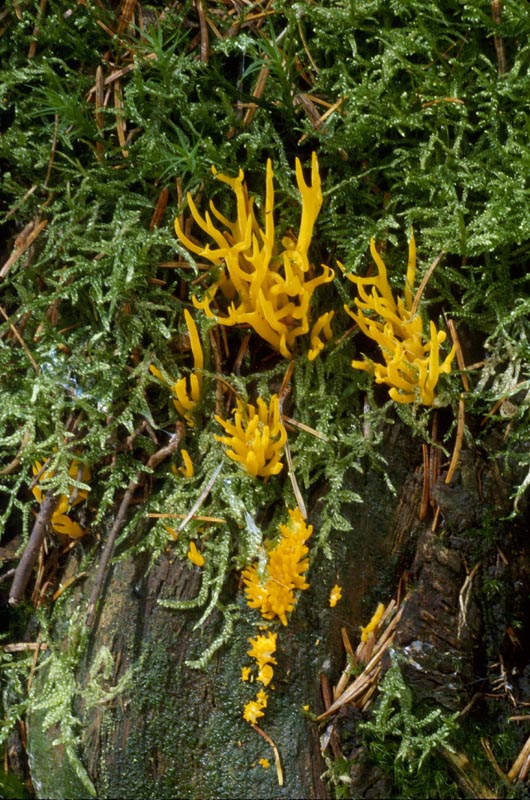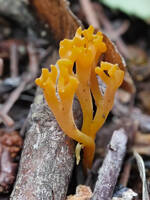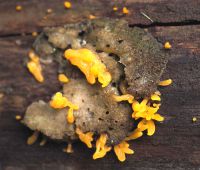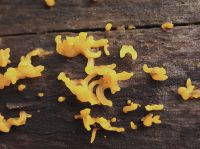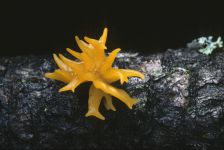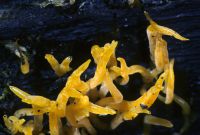Distribution: It is common, but rarely abundant, in western North America, as well as in Europe and Asia.
Habitat: Occurs on rotting conifer wood in the forests
Conservation Status: Not of concern
Calocera viscosa looks very much like a clavaria or clavulinopsis, especially in its bright golden color. However, it actually is a jelly fungus, related to C. cornea and Dacrymyces palmatus. Thus, microscopically, it is quite distinct from the other corals (having spores with single crosswalls produced on basidia that look like tuning forks or wishbones). Macroscopically, it is harder to separate, but its flesh is tougher and gelatinous, and the fruitbodies are viscid when moist.
PNW Herbaria: Specimen records of Calocera viscosa in the Consortium of Pacific Northwest Herbaria database
CalPhotos: Calocera viscosa photos

